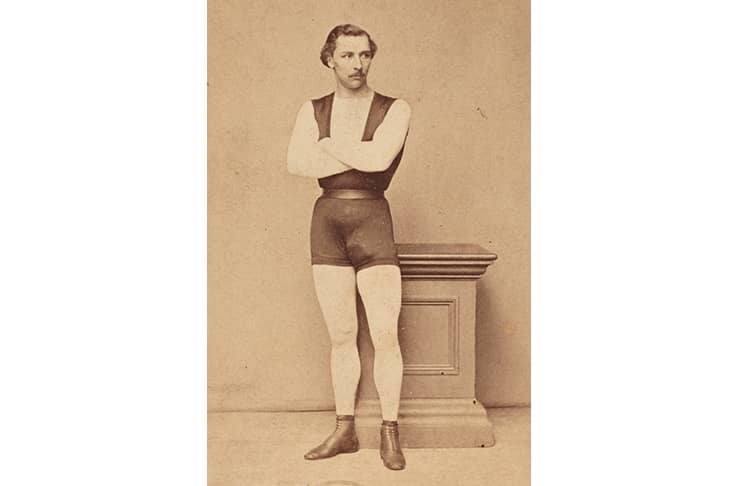Jules Léotard was blessed in his name. It might have been quite different had he been called, say, Jules Droupé. As it was, his family name was lithe, elongated, taut. It was a name with stretch.
Léotard was born in Toulouse in 1838, the son of a gymnastics teacher. The young Jules might have become a lawyer. He passed his legal exams, but twisting words wasn’t enough. He wanted to be twisting, turning, falling, flying. At 18, he began to practise with trapeze bars, ropes and rings over a swimming pool. He joined the Cirque Napoléon, and on 12 November 1859 performed its first flying trapeze routine.
He became the subject of a popular song of 1867, ‘The Daring Young Man on the Flying Trapeze’, by the British lyricist and singer George Leybourne. ‘He’d fly thro’ the air with the greatest of ease/ A daring young man on the flying trapeze…’ I’d always thought that it was a joyful song, light, weightless, winging over the airwaves. Not a bit of it. Our narrator opens: ‘Once I was happy, but now I’m forlorn,/ Like an old coat that is tattered and torn…’ The girl he loves has fallen head over heels with an acrobat and run away to join the circus.
Léotard performed in a one-piece knitted suit which he would have called a maillot but which later took on his name to become the super-stretchy leotard beloved of ballerinas, Olympic gymnasts, Jane Fonda and assorted supermen and women. You may remember the skit in Disney Pixar’s The Incredibles when Edna Mode, a fashion designer for superheroes, shows Mrs Incredible her new costume. ‘Virtually indestructible,’ says Edna as rockets launch. ‘Yet it breathes like Egyptian cotton.’
Leotards have been in the news lately.









Comments
Join the debate for just £1 a month
Be part of the conversation with other Spectator readers by getting your first three months for £3.
UNLOCK ACCESS Just £1 a monthAlready a subscriber? Log in